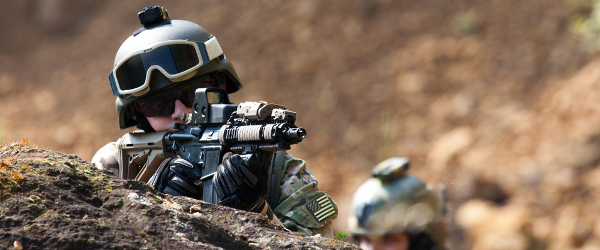
Soldiers on near-future battlefields will get a Google Glass-style augmented reality headset.
Named ARC4, the helmet and visor lets officers view and send maps, information and orders to soldiers who will see the data in front of their eyes.
ARC4, developed by Applied Research Associates, shows how consumer technology is influencing military technology more than ever. Numerous uses for Google Glass have been developed for consumer use, and it is now ebbing onto the battlefield.
Using augmented reality, soldiers will see icons such as map points, friendly forces, vehicles and even aircraft overlaid onto their field of vision.
ARA said: "You are able to perform your mission with high awareness of their surroundings, with enhanced safety, speed, and in close coordination with team members."
However, the firm claimed that its system is much more advanced than Google Glass.
"ARC 4 does more than present conventional communications and directional information (e.g., messages, tweets, maps, pictures) in a heads-up fashion.
"ARC4 is transforming your view of the world with digital tags that persist as if painted on physical objects. Imagine it as virtual grafiti."
Back in the UK Surrey based firm 2iC, with funding from the Defence Science and Technology Laboratory, has developed a way of linking different systems in the battlefield.
It said that the proof of concept is intended to allow troops to reduce their kit burden, while also increasing operation tempo and overall battlefield effectiveness. The system enables integration and coordination between independent systems that weren’t originally designed to work together.
The project has resulted in 2iC being contracted by the Ministry of Defence (MOD) to create completely new communicating protocols between battlefield equipment.
"In the past it has been difficult to link and control the large number of different systems needed in the battle-space and share information intelligently between each of them," said 2iC.
The CEO of 2iC, Graham Booth, said: "2iC has been able to connect and then coordinate previously standalone systems anywhere: whether on soldiers, vehicles and bases or distributed systems in the civil world. We believe that this, along with the availability of the open standard, could have significant benefits on future interoperability for both UK forces and allies."






